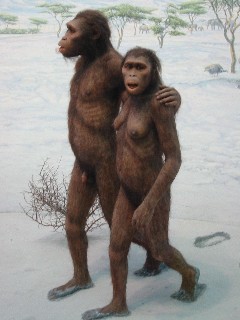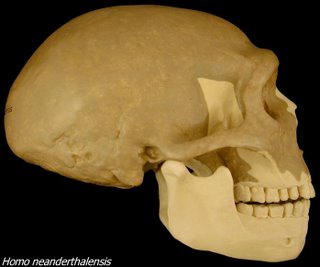The roots of the Po
starts this month, a new column dedicated to archeology. Many wonder what the purpose of this subject and what are the differences from the story. As the story starts with documents of all types to manufacture facts and historical events, Archaeology studies, from the material remains (ie what is left buried in the ground), the daily lives of our ancestors and the historical nature of those prehistoric. In Basically, the Archaeology is concerned with the study of our roots and our most ancient origins.
The most obvious consideration that every latinense can do at this point is that, in reality, no one has historical roots in this area. Many are from the Veneto, Campania others, and some Roman or Calabria or Pugliese, and so on. In this case, however, archeology allows us to play with time and explore far and wide by becoming all relative.
is just playing with time, in fact, we discover that the pontine territory of the roots we all share. Who can say they did not feel or Volsci descendant of the Romans? Who can say that I feel part of the events that in the Middle Ages have affected the Pontine plain? From the construction of monasteries and castles in fortified towns. And most importantly, who can say they feel relieved by the events that led us to become who we are, even from a physical point of view? I mean, who can say they did not feel a homo sapiens?
It is from here that will start our journey in the history of the territory of Latium, S. Felice Circeo, where, in the late '40s and '70s, campaigns have been conducted focused research to reconstruct the prehistoric situation of the promontory and the surrounding plains in prehistory.
To understand the importance of Circeo, we must move in Africa. Is there, in fact, that has "evolved" homo sapiens, and that's where we must turn to know .
The little man ...
 The man has a defined process that has led a group of apes lived in Africa about 7 million years ago modern humans to evolve, a process that ended 200,000 years ago with the emergence of homo sapiens, but that has known during its development, several other players.
The man has a defined process that has led a group of apes lived in Africa about 7 million years ago modern humans to evolve, a process that ended 200,000 years ago with the emergence of homo sapiens, but that has known during its development, several other players. Thanks to the contribution of paleontology has been possible to identify the set of ancestors who have preceded men Circeo and, lately, thanks to genetics, it is possible to speak of an evolutionary line quite defined. The following is a summary description and diagram
 atic main species that have preceded us on earth from which descend (also see images):
atic main species that have preceded us on earth from which descend (also see images): -all species of Australopithecus (like the famous Lucy) 4.5 to 2.5 MA (million years) BC, exactly halfway between a gorilla and a man, they already had a mastery of the upright but still had very long arms and adapted to arboreal life very large molars and strong, suitable for chewing of roots and fruit have thick skin.
 - homo habilis 2.5 to 1.5 MA BC: a cross between Australopithecus and man, but nearest to the first, is the first species using stone tools. Still has, however, arboreal features.
- homo habilis 2.5 to 1.5 MA BC: a cross between Australopithecus and man, but nearest to the first, is the first species using stone tools. Still has, however, arboreal features.
- homo erectus 1.5 MA - 70,000 BC is the first kind with fully human characteristics. It was the first to leave Africa and conquer Europe and Asia to the Philippines and China. He was able to use the fire and produced more complex instruments of homo habilis. Some scholars believe it was also able to navigate and to articulate speech sounds similar to ours.
 - Homo neanderthalensis 100000-35000 BC: The only true European ancestor of man right here has evolved from homo erectus , for which he features Fundamental such thick eyebrows, big nose, forehead, elongated and flattened with intracranial volume (ie amount of brain) than homo sapiens. In
- Homo neanderthalensis 100000-35000 BC: The only true European ancestor of man right here has evolved from homo erectus , for which he features Fundamental such thick eyebrows, big nose, forehead, elongated and flattened with intracranial volume (ie amount of brain) than homo sapiens. In
Guattari cave, cave in goats and shelter Blanch on the promontory of Circeo, between 80,000 and 40,000 years BC, this was the species that hunt in the valley below that, at that time, due to the current ice age, was much larger current.
- While Neanderthals evolved and spread to Europe, Africa, Eastern Europe, in the same area where erectus had evolved, was born the first homo sapiens , so-called archaic and dated to 200,000 years BC From this
time onwards, the rise of sapiens has been unstoppable. In a short time (relatively), has conquered the world: Middle East (70 to 50,000 BC), Australia (50000 BC), Europe (40000 BC), the Far East (40000 BC) and America (from 20 to 15,000 BC).
to shop of the unstoppable rise of sapiens, in Europe, was the poor neanderthal. While the rest of the world met sapiens erectus or wilderness in Europe met with what we have always considered it one of our cousin and instead, in light of recent genetic discoveries, it turned out to be a distant relative of an extinct branch of the family.
fact, while many theories about the evolution of homo sapiens assumed a its origin directly from neanderthal, genetics has disproved this hypothesis. It has been demonstrated through the genetic study of many peoples, that all descended from African ancestors and, in particular, a single father and a mother whose only carry the genetic imprint, a sort of Adam and Eve's DNA.
In the next issue we will try to better understand the differences between our way of life and that of Neanderthals, in the light of discoveries made in the Circeo.
From there we will move then to more recent times to reach Satricum (Montello town) first and then the Romans.
The final bet this trip will be to feel all a bit 'most pontine and a bit' more aware the history of the area in which we live to appreciate and love him a little more.
Dr. Mastroleo
if you want to know more, send me an e-mail:
